
Equisetaceae - horsetail family
This family worldwide is composed of 15 species in one genus, Equisetum.
Maine is home to 8 species in 1 genus (hybrids excluded). If you know which species you have or are interested in learning about, click on the appropriate link from the species list below. Otherwise, to determine which species your horsetail/scouring-rush is, refer to the table below the species list.
Equisetum (8 species)
Equisetum arvense - field horsetail
Equisetum fluviatile - river horsetail
Equisetum hyemale ssp. affine - tall scouring-rush
Equisetum palustris - marsh horsetail
Equisetum pratense - meadow horsetail
Equisetum scirpoidea - dwarf scouring-rush
Equisetum sylvaticum - wood horsetail
Equisetum variegatum - variegated scouring-rush
| red font = character state unique or nearly so | arial stem morphology | stem branching | central cavity size | cone tip | vallecular canals | char. 6 |
| E. arvense | dimorphic | sterile branched; fertile unbranched | 1/4–1/3 of stem diameter | blunt | present | |
| E. fluviatile | monomorphic | unbranched or with a few irregular branches | ≥4/5 of stem diameter | blunt | absent | |
| E. hyemale ssp. affine | monomorphic | mostly unbranched | approximately 2/3 of stem diameter | sharply pointed | present | |
| E. palustre | monomorphic | branched | 3/4 of stem diameter | blunt | present | |
| E. pratense | dimorphic | sterile branched; fertile unbranched when young, later branched | 1/6–1/3 of stem diameter | blunt | present | |
| E. scirpoides | mostly unbranched | absent | sharply pointed | present (3) | ||
| E. sylvaticum | dimorphic | fertile unbranched when young, later branched; sterile branched | 1/6–1/3 of stem diameter | rounded | present | |
| E. variegatum | unbranched | 1/3 of stem diameter | sharply pointed | present |
Equisetum (horsetail, scouring-rush)
[information to be added]
Equisetum arvense (field horsetail) may be mistaken as two different species if one observes the stems in early April and then later in the season. This is becausee the stems are dimorphic; i.e., there are two different forms). Early in the season the fertile stems appear. They are flesh-colored and are unbranched (lower left three images). Later the sterile stems emerged emerge, their ascending branches soon spreading out (lower right image, showing some withering fertile stems).
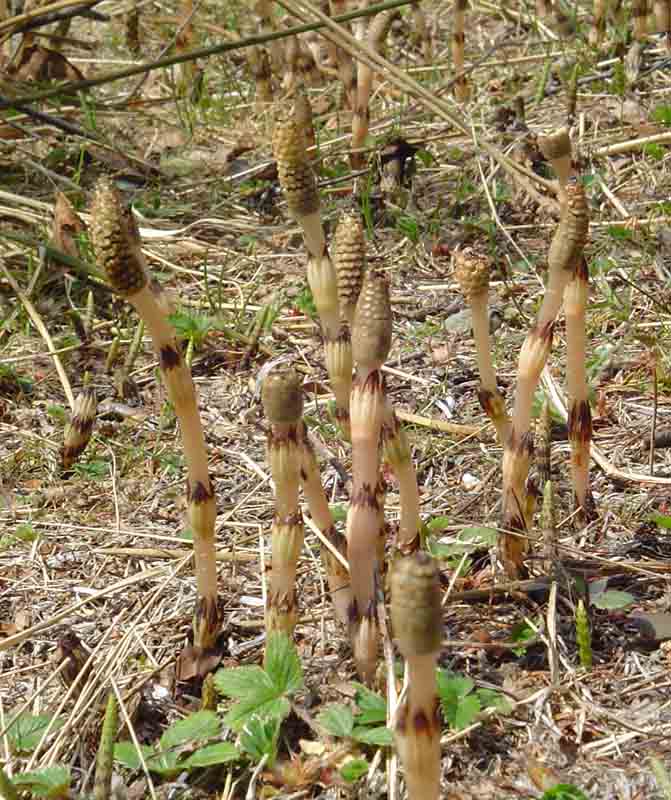
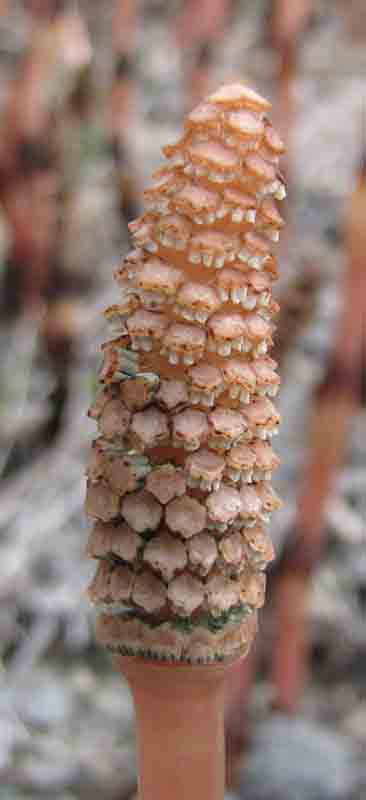
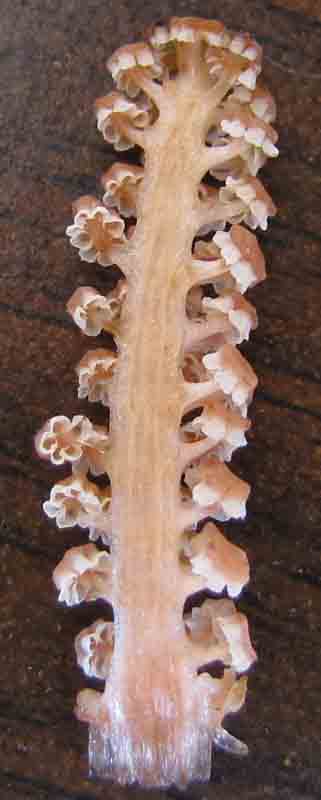
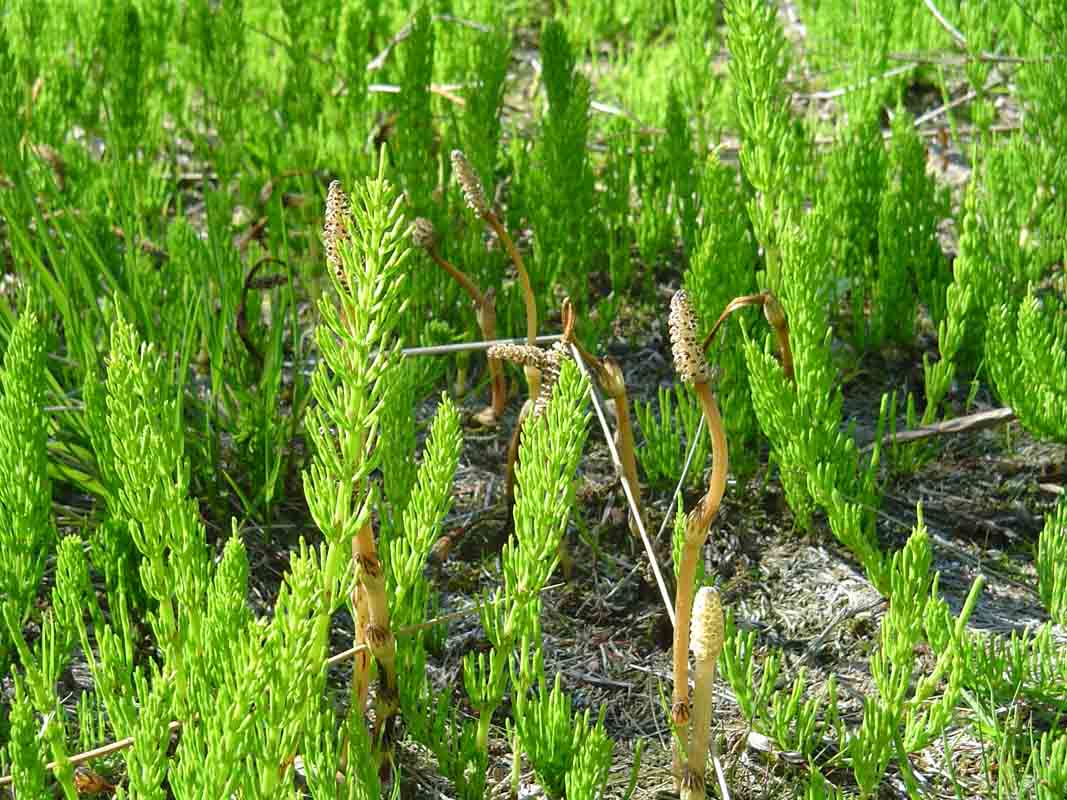
(click on an image to enlarge)
Equisetum fluviatile (river horsetail) grows in shallow water (image below).
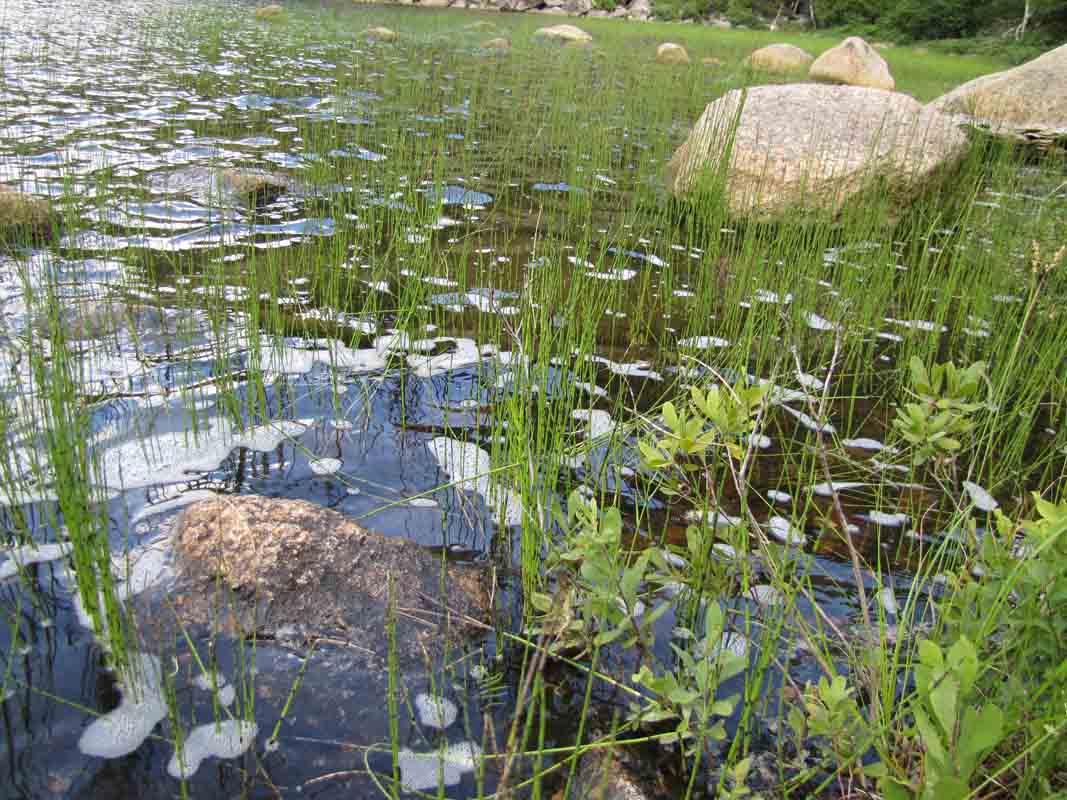
(click on an image to enlarge)
Equisetum hyemale ssp. affine (tall scouring-rush)
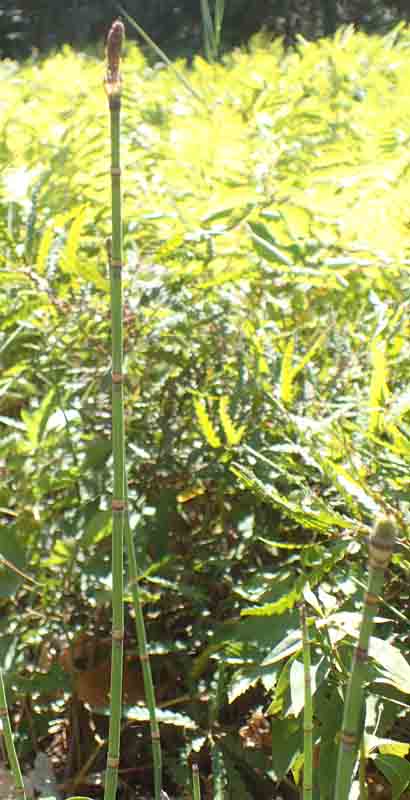

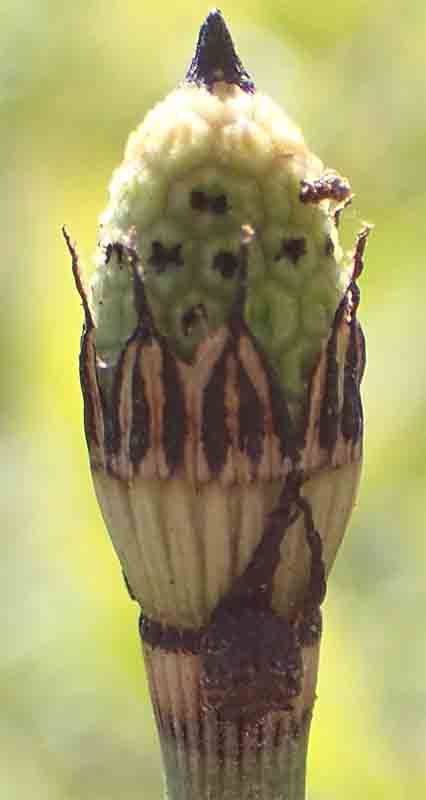
(photos by Kevin Stone; click on an image to enlarge)
Equisetum palustre (marsh horsetail) - [information to be added]
Equisetum pratense (meadow horsetail) - [information to be added]
Equisetum scirpoides (dwarf scouring-rush)
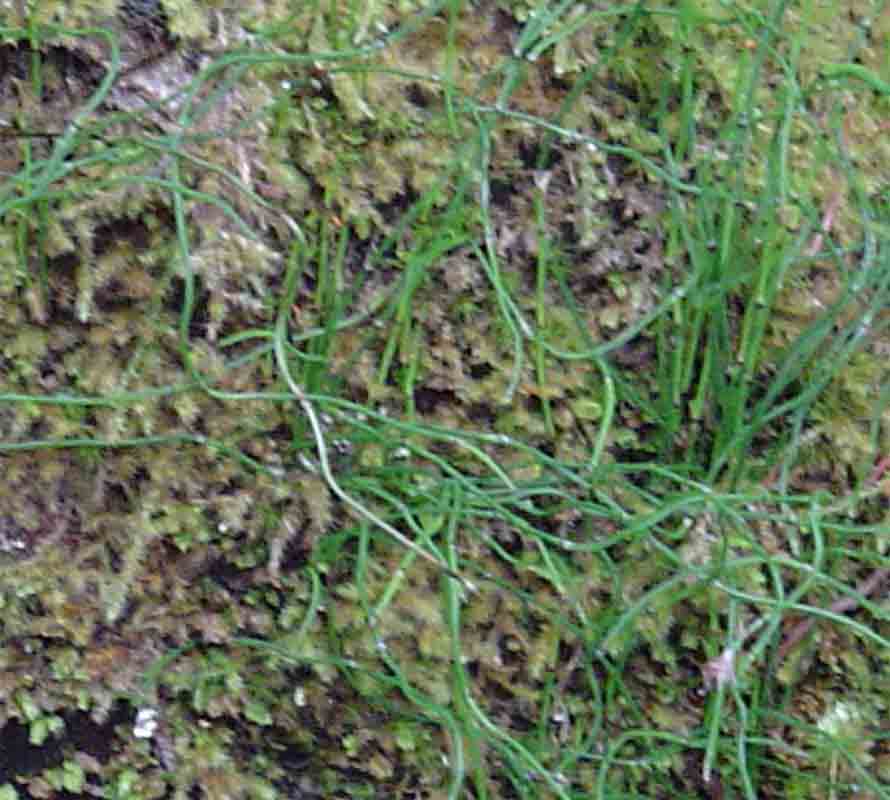
(click on an image to enlarge)
Equisetum sylvaticum (wood horsetail)
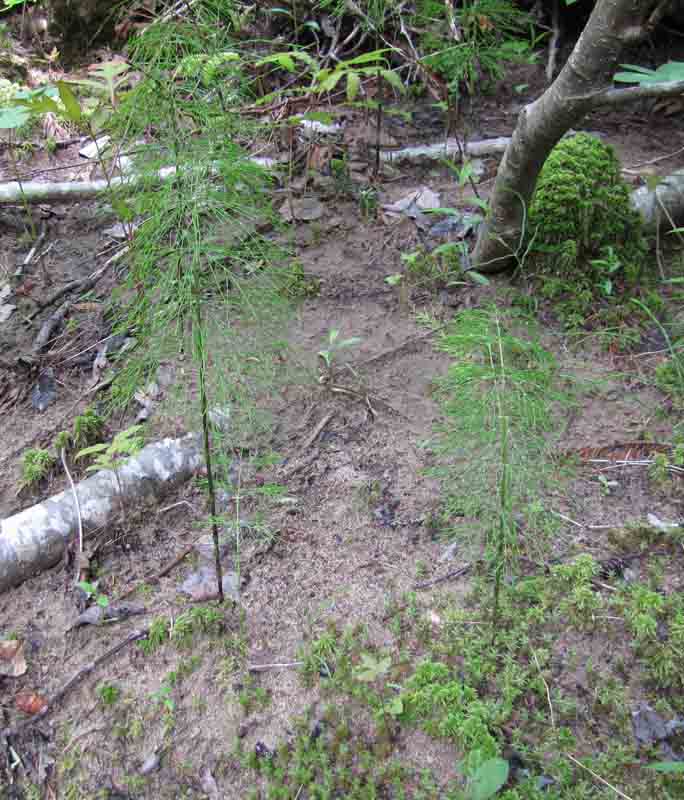
(click on an image to enlarge)
Equisetum variegatum (variegated scouring-rush) - [information to be added]
Note:
1. Taxonomy and nomenclature follow Flora Novae Angliae by Arthur Haines (2011, Yale University Press, ISBN 978-0-300-17154-9).